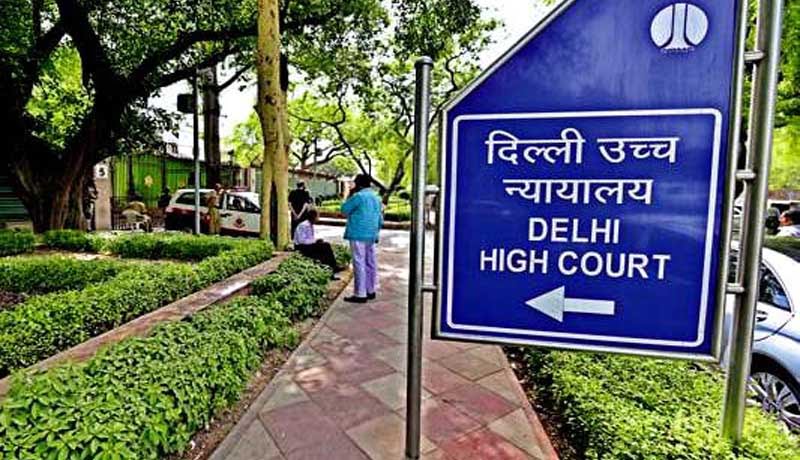Delhi HC upholds the Constitutional Validity of Sections 131 (b), 132(1)(a), and 132 (2) of the Finance Act, 1999 [Read Judgment]

Finance Act – Delhi High Court – taxscan
Finance Act – Delhi High Court – taxscan
“Petitioners would have to bear additional burden is not a ground to challenge the Legislative Policy”: Delhi High Court.
The Delhi High Court, in a recent judgment, upheld the Constitutional validity of sections 131 (b), 132(1)(a), and 132 (2) of the Finance Act, 1999 since it was not unreasonable and not inconsistent with Article 14, 19(1)(f) and 19(1)(g) of the Constitution.
The division bench further observed that, Petitioners would have to bear additional burden can clearly not be a ground to challenge the legislative policy.
The Court was considering a writ petition filed under Art. 226 of the Constitution challenging Sections 131 (b), 132(1)(a), and 132 (2) of the Finance Act, 1999 as being ultra vires the Constitution of India.
By virtue of Section 131 (b) of the Finance Act, 1999, clause (xxviii) was introduced in Sub-section 2 of Section 37 of the Central Excise Act, 1944, to specifically empower the Central Government to make rules to provide for the lapsing of credit of duty lying unutilised with the manufacturer from a specified date.The said provisions were inserted to validate Sub-rule (4A) of Rule 57F of the Central Excise Rules, 1944 which had been held to be beyond the rule making power of the Central Government by the Supreme Court in Eicher Motors Private Limited v. Union of India: 1999 (106) ELT 3 (SC).By virtue of the said sub-rule, MODVAT credit in respect of Excise duties paid on inputs for manufacture of goods falling under the heading no. 87.01, 87.02, and 87.04 and 87.06 of the Schedule to the Central Excise Tariff Act, 1985 lying unutilised as on 16.03.1995, was mandated to have lapsed and consequently unavailable for payment of duty on excisable finished goods.
The Petitioners in the instant case are mainly engaged in the manufacturing of chassis for light commercial vehicles falling under sub-heading 8706.20 and 8706.40 to the Schedule to Central Excise Tariff Act, 1985 as well as motor vehicles for carrying goods that fall within the sub-heading 8704 of the said Schedule. The Petitioners purchase raw materials/inputs for the manufacture of finished goods, from indigenous sources as well as from overseas. The Petitioners pay all applicable duties including Excise Duty, Customs Duty, Additional Duty and Countervailing Duty on raw material/inputs purchased by them. In terms of the MODVAT scheme, the Petitioners have been availing credit in respect of the duty paid by them on inputs for discharge of the Excise Duty payable on the finished products since 1986. It is stated that in 1993, the Excise Duty payable on the goods manufactured by the Petitioners was reduced from 20% to 15% but the duty chargeable on the parts used in manufacture of those goods was increased to 20% to 25%. In view of this duty structure, the Petitioners were unable to fully utilise the MODVAT credit available in respect of duties paid on inputs for discharging the Excise Duty payable on the finished goods.
According to the petitioners, the said inverted duty structure – where the rate of duty payable on inputs was greater than the duty payable on finished goods - was only in respect of tractors and LCV manufacturing Industry. The said Industry comprises of only nine manufacturers including the Petitioners and only these manufacturers are adversely affected by the said Rule 57F(4A) of the Rules.It is claimed that SML Isuzu Limited and VE Commercial Vehicles Limited were denied the benefit of accumulated credit of Rs. 4.88 Crores and Rs 8.21 Crores respectively; they, accordingly, claim refund of the said amounts.
For the petitioners, it was submitted that the effect of the impugned provisions of the Finance Act, 1999 is that the Petitioners are deprived of their vested rights and in the given circumstances, the impugned provisions are unreasonable and arbitrary and ultra-vires the Constitution of India. It was further contended that validating Rule 57F(4A) with retrospective effect was unreasonable and violative of the Part III of the Constitution. It is permissible to pass retrospective legislation in certain circumstances, but it would be unreasonable to resort to such legislation in cases where the Assessees had acted in accordance with rules. The petitioners, further referred to the opinion of Justice Sen in Lohia Machines Limited v. Union of India (1985) 2 SCC197, wherein it has been held that the retrospective application of Section 80J of the Income Tax Act, 1957 would be invalid.
The division bench comprising of Justice S Muralidhar and Justice Vibhu Bakhri observed that the legal position as now well established is that a legislature has the power to enact laws both prospectively as well as retrospectively. In the case where the legislature enacts laws for curing defects to validate an earlier enacted invalid law, or to clarify an earlier legislation, the same would not be unconstitutional solely for the reason that the said laws have been enacted with retrospective effect. However, in cases where a law is enacted to impose a fresh levy with retrospective effect or to take away a benefit granted under an earlier law, the same is required to be justified on rational reasons.
The Court further found that “if we now look into the surrounding circumstances and the context in which Rule 57F(4A) was initially made, it is clear that the same was a part of rationalizing the Excise Duty structure. It is important to note that the Excise Duty structure existing prior to 1996 had resulted in the manufacturer paying a higher rate of excise duty on inputs as compared to the finished products; the duties payable on inputs was ranging from 20 to 25% while that of the finished product was 10 to 15%. The aforesaid duty structure coupled with the fact that manufacturing of the LCVs did not result in sufficient value addition to absorb the duties payable on theinputs, had resulted in accumulation of MODVAT Credit. Conceptually, the MODVAT scheme was introduced to prevent the cascading effect of tax. It was clarified by the department in that sense that there was no one to one co-relation between duty paid on the inputs and the output.However, it was also clear that the duty paid on inputs was not available as a credit in respect of duties on any other excisable finished product. If this restriction was continued and the duty structure was not rationalised for higher duties (in absolute terms) then the duties paid on the inputs that resulted in the accumulated credit available with the Petitioners would remain as such and would be of no benefit to them (unless they changed their business model). Thus, although, the Petitioners had an accrued right in respect of duty paid by them, such right was limited and the Petitioners were not entitled to claim refund of such duties.
It is in the aforesaid context that the Central Government decided to rationalise the structure of excise duties and Rule 57F(4A) was an integral part of this rationalisation. One limb of the rationalisation was to reduce the duties paid on the finished product; this would ensure that the duties paid on inputs would be fully absorbed towards duties on the finished product. The second limb was to provide flexibility in use of the MODVAT credit available on account of payment of duties on raw material/input; such duties could now be used towards discharge of finished products other than those in respect of which such raw material/inputs were used/intended to be used. The manufacturer was now no longer constrained to use this credit only towards the duties of the finished products manufactured by use of such inputs/raw material in respect of which the duty credit was available. The third limb was to start afresh and lapse the accumulated credit; Rule 57F(4) which provided for elapsing of credit was, thus, the third limb of this rationalisation. It is apparent that the Central Government did not want the accumulated credit to further reduce the collection of revenues.
The Court observed that Central Government sought to balance the rationalisation of duty structure and provide flexibility in the use of credit by lapsing the accumulated credit which was admittedly a product of the earlier duty structure. On this basis, the Court opined that Rule 57F(4A) was not so irrational or unreasonable as to fall foul of the Constitution of India.Following the decision of the Supreme Court in J.K. Jute Mills Co. Ltd. v. The State of Uttar Pradesh: AIR 1961 SC 1534,it was opined that the Petitioners would have to bear additional burden can clearly not be a ground to challenge the legislative policy.
The Court, while dismissing the petitions, placed reliance on the decision of Madras High Court in Krishnamurthi and Co. etc. v. State of Madras: (1973) 2 SCR 54 and held that in the present case, the Petitioners and similarly placed manufacturers are mulcted with additional burden by virtue of Rule 57F(4A) of the Rules. However, that by itself would not render the said Rule as unreasonable or arbitrary so as to fall foul of Article 14, 19(1)(f) and 19(1)(g) of the Constitution.
Read the full text of the Judgment below.


